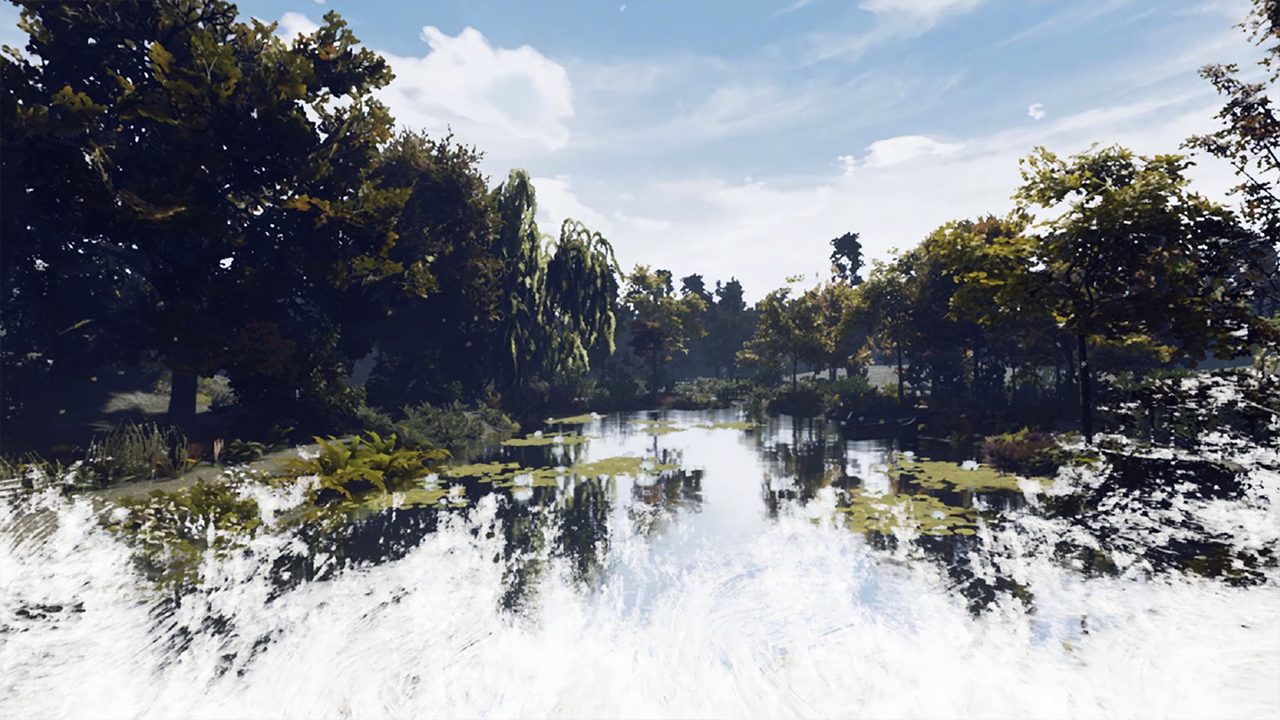
MOONSHOT | Claude Monet, The Water Lily Obsession: How Virtual Reality Creates a Magic Moment
I recently had the opportunity to visit Paris for some client work. Over the weekend, I enjoyed a lot of what Paris offers: unbelievable food, even better wine, and captivating views. I also ended up getting a glimpse at a future for museums around the world: the use of virtual reality to enrich our understanding of culture and history.
“Water Lilies” at the Musée de l’Orangerie
One of my favorite aspects of Parisian culture is the sense of history among one of the world’s most modern, innovative cities. For the better part of a weekend morning, I visited the Musée de l’Orangerie, where I became immersed in a cycle of Claude Monet’s famous Water Lilies paintings. Throughout his life, Monet created hundreds of paintings as part of the Water Lilies series, which are housed in museums around the world. The permanent display at the Musée de l’Orangerie consists of an oblong pair of galleries fitted with eight panoramic panels, a truly immersive experience in and of itself. Seeing Water Lilies in this setting is without a doubt the most moving, beautiful, emotion-evoking work of art I’ve ever experienced in person. The size and scale are breathtaking. The way the rooms are set up in a panoramic fashion makes you feel like you’re being immersed in the paintings. Because of Monet’s painting technique, you can appreciate the scope of paintings from afar, and then when you see them close-up, you can see how the individual strokes work together to create inspiring art.
In addition, as if the two 360-degree rooms weren’t enough, the museum offers a virtual reality (VR) experience called “Claude Monet, The Water Lily Obsession” to help visitors better understand and appreciate the story behind Water Lilies. After viewing the paintings, I became immersed in the VR experience, which deepened my appreciation for the paintings by educating me about Monet himself. For example, VR took me into Monet’s garden in Giverny, the setting that served as the muse for Water Lilies. As the official press release from HTC Vive (provider of the VR gear) states, “You stand in the shallow waters at Giverny, inspired as he was inspired by the dappled light and fickle seasons waxing and waning across the lilies and bulrushes. You are then transported to Monet’s studio, where a virtual canvas is stretched taut above and around you and the artist’s bold, searing brushstrokes build up across your vision.”
Yes, and that’s just for starters. You also learn something about Monet’s times. For example, you learn that as World War I ended, Monet bequeathed a group of Water Lilies to France as both a monument to peace and a gesture of friendship to French Prime Minister Georges Clemenceau. Here is VR on its best day – supporting the mission of an organization, in this case to help a museum educate and engage its visitors, which is becoming harder to do in an age when people multitask with digital devices.
A Successful Experience
“Claude Monet, The Water Lily Obsession” worked on two levels for me:
- As a storytelling medium. VR helped me understand the story behind famous works of art. VR certainly did not replace the experience of viewing Water Lilies (nor could it). But VR helped me appreciate how Monet worked – how he drew upon the real-world setting of his garden, and how hard he worked to create these masterpieces.
- As a way to gain empathy. I became more empathetic to Monet and the people of his time. For instance, the experience allowed me to view the world through the perspective of Monet’s eyes as his eyesight began to deteriorate, which may help explain the abstract nature of his paintings. I also become more empathetic to the horrors that entire nations suffered during World War I, a cataclysmic event that Monet honored with his gift to France.
At the same time, there are many opportunities for the experience to be even more immersive. For example, the museum could:
- Make the experience more interactive. The current experience requires that you sit down for the whole 10 minutes, moving your head is the most you can do. Wouldn’t it be amazing to make it interactive? Providing the VR could help visitors create a work of art — another Water Lilies, perhaps?
- Test other senses. What is the role that sound (beyond the narrator’s voice), smell, taste, and touch can play to make the experience more lovable?
But make no mistake: the VR experience was powerful. You could tell the experience was connecting just by watching the emotional reactions of the museum goers at the VR station when they strapped on their headsets and audibly gasped as they explored Monet’s word. VR at the museum provided that “magic moment” when you know your customers are captivated by a lovable experience.
Most importantly, VR supports the museum’s purpose: attract visitors to experience art. As Moonshot says in our own Executive Guide to Immersive Reality, immersive reality experiences such as VR delivers sustainable value not by being cool and memorable (although many immersive reality experiences certainly are when done right). Immersive reality achieves real breakthroughs by fueling business growth through the creation of lovable experiences and products centered on the customer. “Claude Monet, The Water Lily Obsession” does exactly that.





